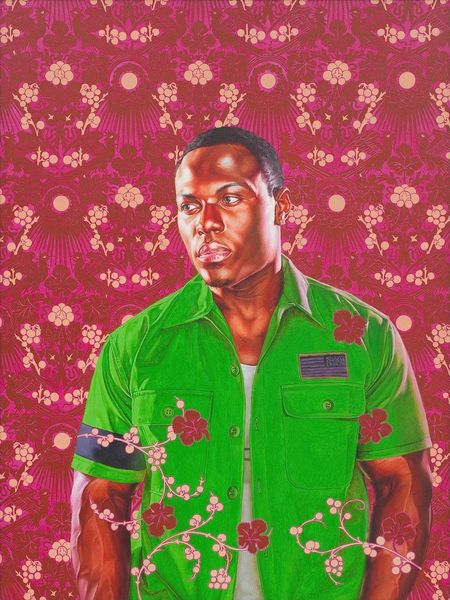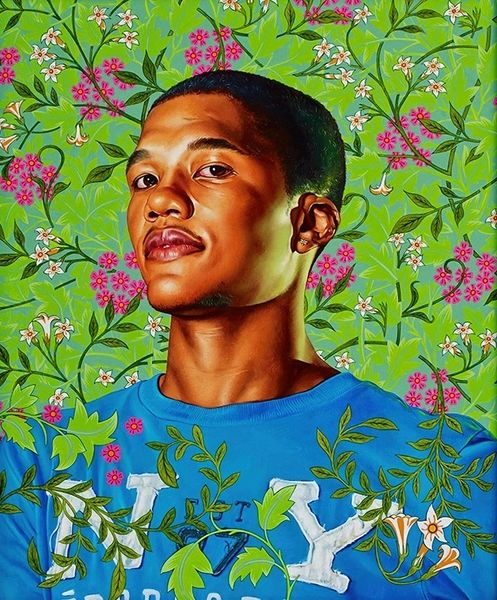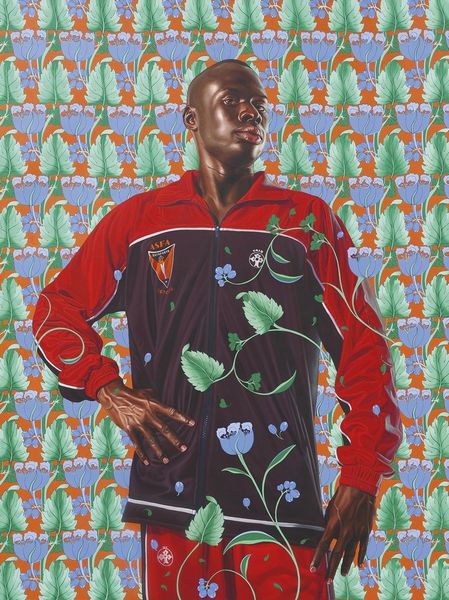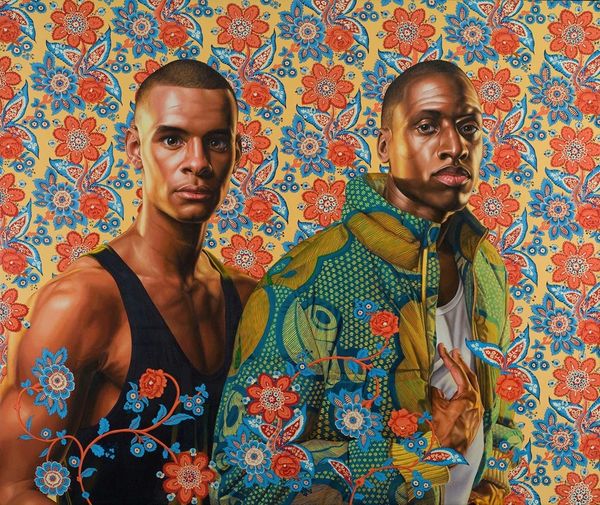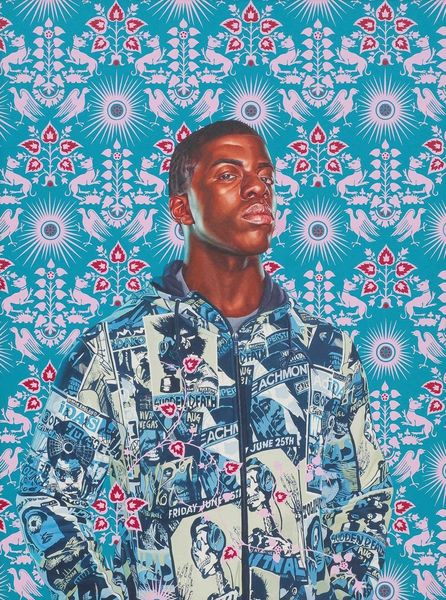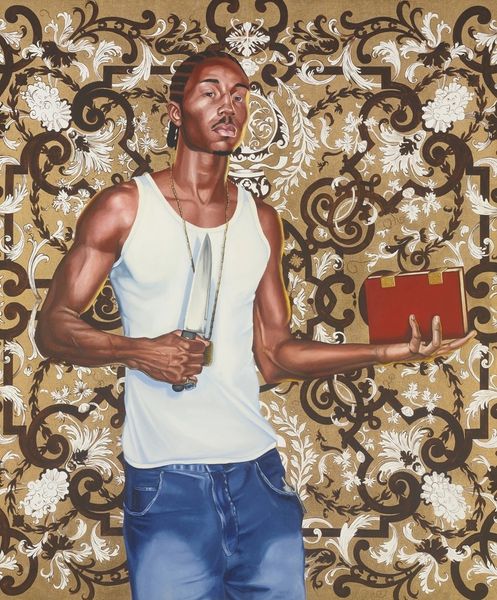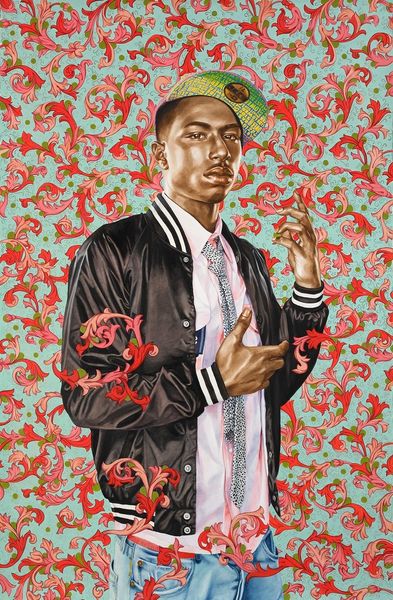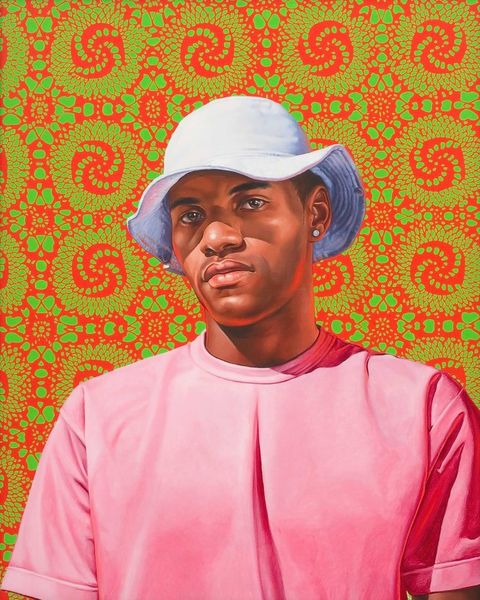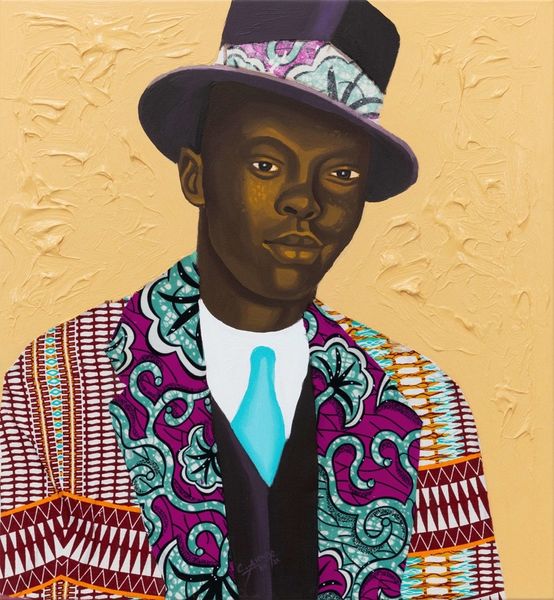
painting, acrylic-paint
#
portrait
#
pattern-and-decoration
#
figurative
#
contemporary
#
painting
#
pop art
#
acrylic-paint
#
figuration
#
acrylic on canvas
#
neo-expressionism
#
pop art-influence
#
portrait art
Copyright: Modern Artists: Artvee
Editor: This is Kehinde Wiley's "Ike Roberts" from 2010, rendered in acrylic on canvas. I'm immediately struck by the contrast – the central figure seems so contemporary, almost defiant, against the backdrop of what feels like very traditional ornamentation. What's your interpretation of this striking juxtaposition? Curator: That contrast is precisely where Wiley’s power lies. He's deliberately inserting Black figures into the historical narrative of portraiture, a space historically dominated by white elites. That ornate background, think William Morris wallpaper, functions as a visual marker of wealth and status that is now being claimed and re-contextualized. Editor: So, it’s not just about beauty, but also about making a statement? Curator: Absolutely. Consider the subject’s clothing, a simple tank top, compared to the regal robes or suits you'd typically see in historical portraits. What does that say to you about Wiley’s intentions? Editor: It makes the portrait feel more… approachable. Less about formal power, and more about the power of the individual, perhaps? It’s like Wiley’s democratizing the idea of the portrait. Curator: Precisely. He is actively challenging the canon and questioning who gets to be represented and how. The floral designs crawling on his clothes, are an almost graffiti like reclamation. How does it impact the original impression of power? Editor: It really shifts the focus from this traditional display of power to the lived experiences and identities of those often excluded from it. I didn’t really appreciate how layered this was on first view. Curator: And that's the beauty of art, isn't it? It’s about unpacking those layers, one conversation at a time, challenging us to rethink our assumptions and histories.
Comments
No comments
Be the first to comment and join the conversation on the ultimate creative platform.


